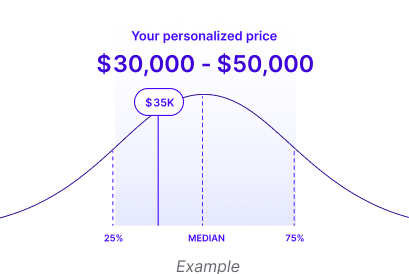FireHydrant
$10,488–$71,100per year
Fast, fair, easy pricing. No sales call required.
FireHydrant
|Visit firehydrant.com
How much does FireHydrant cost?
Median contract value
$33,195
Based on data from 41 purchases, with buyers saving 21% on average.per year
Median: $33,195
$10,488$71,100
LowHigh
See detailed pricing for your specific purchase
AI Quote Analysis
Upload your quote to check if you’re getting a fair price, under 2 minutes and completely free.

How does FireHydrant price and package their products?
View pricing on FireHydrant's website
Product:
Trial Account
Free for two weeksPayment Terms: N/APopular Features: Unlimited incidents and Slack/MS Teams integrations
Compare prices for similar companies
| Supplier | FireHydrant | Rootly |
|---|---|---|
| Median Contract Value | $33,195 | $10,396 |
| Avg Savings | 21.47% | 27.96% |
Other companies you may be interested in
Negotiating with FireHydrant
Negotiation Tips
Leverage competing proposals to negotiate from while evaluating FireHydrant. Present alternatives that provide similar functionality at a better price point, signaling to FireHydrant that financial constraints demand negotiation on their offer.
Identify any concerns or product issues experienced with FireHydrant, and raise these during negotiations to pressure for additional discounts. Document the impact of these issues on usage and efficiency to strengthen your case.
Request to have auto-renewal clauses removed from the contract. Doing so puts you in a better position of control when it comes time to renew in the future and can often lead to better flexibility in negotiations.
If multi-year contracts are being considered, emphasize that such commitments rarely receive discounts and propose a preference for shorter terms unless further incentives are offered. This tactic can be useful in establishing pressure points for negotiations.
Introduce the topic of overage fees during negotiations and reference any original agreements. Propose waiving these fees, especially if you anticipate increased usage moving forward, to avoid financial surprises.
Considerations when buying FireHydrant
OwnershipFireHydrant is privately owned.
Fiscal year endDecember 31
Best months to buyJanuary, July, December
Payment TermsAnnual subscriptions, Monthly subscriptions, Payment via credit card or purchase order for Enterprise
Upgrades/downgradesYes, FireHydrant offers both upgrades and downgrades for its services, making it easy for users to adjust their resources as their needs change.
Redline thresholdRedline threshold estimate is $100k.
Vendr community insights for FireHydrant
What real buyers recommend in the negotiation process
Company with 201-1000 employeesThis year
On our new purchase, we were faced with budget restraints; leveraging competition and a 24 month agreement, we were able to reduce our pricing by 25% Additionally we requested additional users and was able to obtain free of charge throughout the term. Company with 201-1000 employeesThis year
We needed to reduce users by 50%, which led to a ~20% increase in per user rates. By leveraging a 2 year agreement, case study and our current financial position we were able to renew at the same per user rate as last year.Company with 201-1000 employeesA while ago
Leveraging Pricing Anchor/Budget, Leadership Involvement, and Competition effectively facilitated a flat renewal with FireHydrant despite initial expectations for increased spending due to user growth. We were able to lean on issues with inaccurate reporting on users to justify remaining at 32 users to reflect actual needs instead of needing to pay for 80 users. This resulted in us being able to stay below $10k in spend vs. being required to spend $24k to accommodate "growth."
Company with 201-1000 employeesA while ago
Fire Hydrant will provide better rates if willing to commit to growth upfront throughout the termAdditional Info
What is FireHydrant?
FireHydrant is a modern incident management tool allowing your SRE and DevOps team to resolve, learn from, and mitigate incidents in the future.FireHydrant's 2 Product
FireHydrant: Enterprise
FireHydrant: Pro